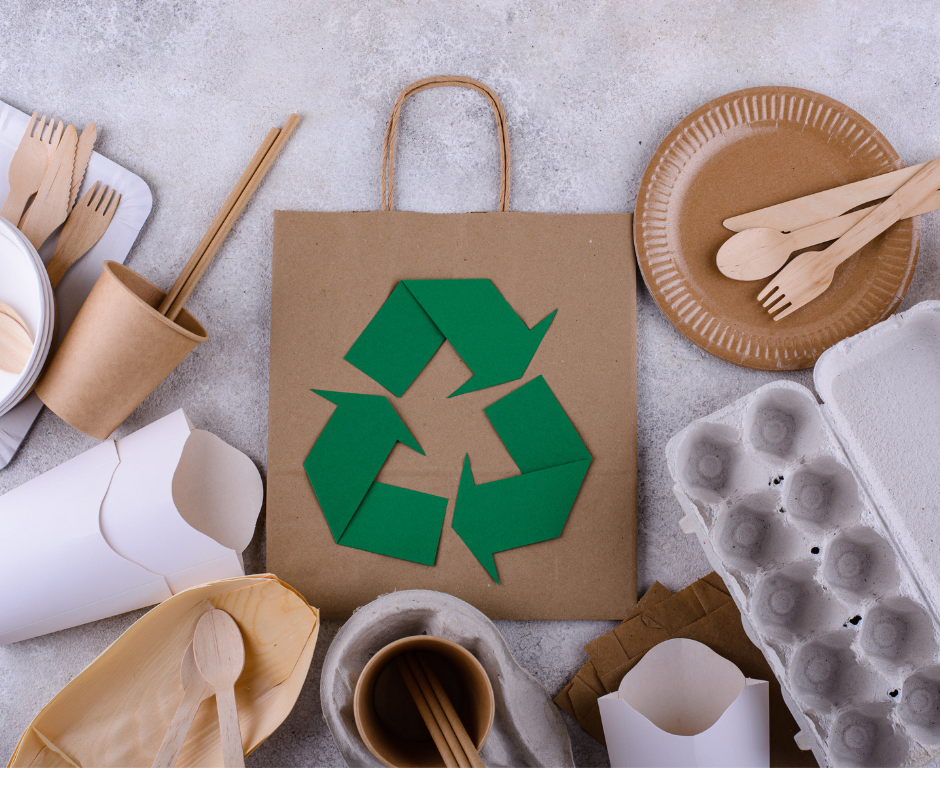In the era of climate consciousness, adopting an eco-friendly lifestyle is not just a trend; it’s a responsibility. Small, intentional changes in daily habits can collectively make a significant impact on the environment. In this blog post, we’ll explore simple swaps and easy ways to incorporate eco-friendly habits into your daily life, ranging from sustainable shopping practices to waste reduction strategies.
I. Sustainable Shopping Habits:
Bring Your Own Bag:
Ditch single-use plastic bags and opt for reusable bags when you go shopping. Keep a foldable, reusable bag in your purse or backpack to eliminate the need for plastic bags at the checkout counter.
Choose Eco-Friendly Packaging:
When possible, opt for products with minimal or eco-friendly packaging. Consider bulk shopping to reduce individual packaging waste, and choose products with biodegradable or recyclable packaging materials.
Support Local and Sustainable Brands:
Shift your purchasing power towards local and sustainable brands. These companies often prioritize ethical and environmentally friendly practices, contributing to the overall reduction of your ecological footprint.
Mindful Clothing Choices:
When updating your wardrobe, consider sustainable and ethically produced clothing. Fast fashion contributes significantly to environmental degradation, and choosing quality, timeless pieces reduces the demand for disposable fashion.
Second-Hand Shopping:
Explore second-hand and thrift stores for clothing, furniture, and household items. Giving a new life to pre-loved items not only reduces waste but also often supports charitable causes.
II. Reducing Household Waste:
Embrace a Zero-Waste Lifestyle:
- Aim to reduce your household waste by embracing a zero-waste lifestyle. Invest in reusable containers, beeswax wraps, and silicone storage bags to eliminate the need for disposable plastic wrap and containers.
Composting:
Turn your kitchen scraps into nutrient-rich compost. Composting not only diverts organic waste from landfills but also provides valuable fertilizer for your garden or plants.
Say No to Single-Use Plastics:
Choose reusable alternatives to reduce your consumption of single-use plastics. When you’re on the go, bring your own cutlery, coffee cup, and water bottle. The quantity of plastic garbage produced is greatly decreased by making these easy changes.
Upcycling and Repurposing:
Before discarding items, consider if they can be upcycled or repurposed. Get creative with DIY projects, turning old furniture into something new or repurposing glass jars for storage. It’s a fun way to reduce waste and give items a second life.
Digital Declutter:
Expand the idea of decluttering to include your online activities. Organize your digital assets, remove unneeded programs, and unsubscribe from pointless emails. This not only streamlines your virtual space but also reduces the energy consumption associated with data storage.
III. Energy and Resource Conservation:
Switch to LED Bulbs:
Make the transition to energy-efficient LED bulbs. They consume less energy, last longer, and are a simple yet effective way to reduce your household’s energy consumption.
Unplug Electronics When Not in Use:
Conserve energy by unplugging electronic devices when they’re not in use. Even when turned off, many devices continue to draw energy if left plugged in.
Invest in Energy-Efficient Appliances:
When replacing household appliances, prioritize energy-efficient models. These appliances not only save you money on energy bills but also contribute to a more sustainable lifestyle.
Harness Solar Power:
Explore the possibility of harnessing solar power for your home. Solar panels are becoming more affordable and accessible, allowing you to generate clean energy and reduce your dependence on traditional power sources.
Water Conservation:
- Adopt water-saving habits such as fixing leaks promptly, using a low-flow toilet, and turning off the tap while brushing your teeth. Conserving water not only reduces your utility bills but also contributes to environmental sustainability.
IV. Mindful Eating and Meal Planning:
Reduce Meat Consumption:
Consider incorporating more plant-based meals into your diet. Reducing meat consumption has a positive impact on both the environment and your health.
Local and Seasonal Eating:
Support local farmers by choosing locally sourced and seasonal produce. This boosts the regional economy in addition to lowering the transportation sector’s carbon footprint.
Meal Planning to Minimize Food Waste:
Plan your meals and purchase only what you need. Proper meal planning minimizes food waste and ensures that perishable items are used before they spoil.
Grow Your Own Food:
If space allows, consider starting a small garden to grow herbs, vegetables, or fruits. Homegrown produce not only reduces your reliance on store-bought items but also connects you with the process of growing your food.
Preserving and Fermenting:
Explore food preservation techniques like canning, pickling, and fermenting. These methods not only extend the shelf life of perishables but also add a creative flair to your culinary endeavors.
Conclusion:
The rise of eco-friendly living is a testament to the collective power of individual choices. By incorporating these simple swaps into your daily routine, you contribute to a greener, more sustainable lifestyle. From mindful shopping to waste reduction strategies, each small change brings us one step closer to a healthier planet. Embrace the journey towards eco-friendly living, and let your daily choices be a positive force for environmental change. Remember, it’s the cumulative impact of these small steps that fosters a sustainable future for generations to come.





